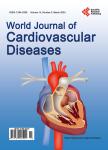Interventional Cardiology Management of a Cardiogenic Shock Induced by Takotsubo Cardiomyopathy at the Hospital Center of Montlucon: A Case Report
Interventional Cardiology Management of a Cardiogenic Shock Induced by Takotsubo Cardiomyopathy at the Hospital Center of Montlucon: A Case Report作者机构:Cardiology Unit Hospital Center of Montlucon Montlucon France Department of Internal Medicine and Specialties Faculty of Medicine and Biomedical Sciences Yaoundé Cameroon Intensive Care Unit Hospital Center of Montlucon Montlucon France Department of Anesthesiology and Critical Care Medicine Faculty of Medicine and Biomedical Sciences Yaoundé Cameroon
出 版 物:《World Journal of Cardiovascular Diseases》 (心血管病(英文))
年 卷 期:2021年第11卷第1期
页 面:45-51页
学科分类:1002[医学-临床医学] 100201[医学-内科学(含:心血管病、血液病、呼吸系病、消化系病、内分泌与代谢病、肾病、风湿病、传染病)] 10[医学]
主 题:Interventional Cardiology Management Cardiogenic Shock Takotsubo Cardiomyopathy
摘 要:Background: Takotsubo cardiomyopathy is frequently considered as a benign disorder. We present an atypical form with cardiogenic shock that was managed by interventional cardiology measures.Case presentation: A 58years old female patient with a past history of hypertension, obesity and multiple sclerosis was admitted at the Hospital Center of Montlucon for septic shock of urinary origin. During hospitalization in intensive care unit, the patient presented a markedly increasing of troponin levels with a diffused ST-segment elevation. Transthoracic Echocardiography showed an altered left ventricular ejection fraction at 35% with hypokinesia of apex and lateral ventricular segments in conjunction with compensatory hyperkinesis of the base;these findings were strongly suggestive of a diagnosis of Takotsubo cardiomyopathy. Despite concomitant anemia, renal failure and sepsis, all adequately treated with complete remission, the patient developed frequent episodes of ventricular tachycardia that prompted an emergency coronarography. During this procedure, the patient presented a cardiogenic shock and bradyasystole that were successfully managed by intra-aortic balloon pumping and temporary transvenous pacing. Finally, there were no coronary lesions and ventriculography confirmed a Takotsubo cardiomyopathy. Given the unstable hemodynamic status of this patient, she was addressed to the University Teaching Hospital of Clermont-Ferrand for more spec



